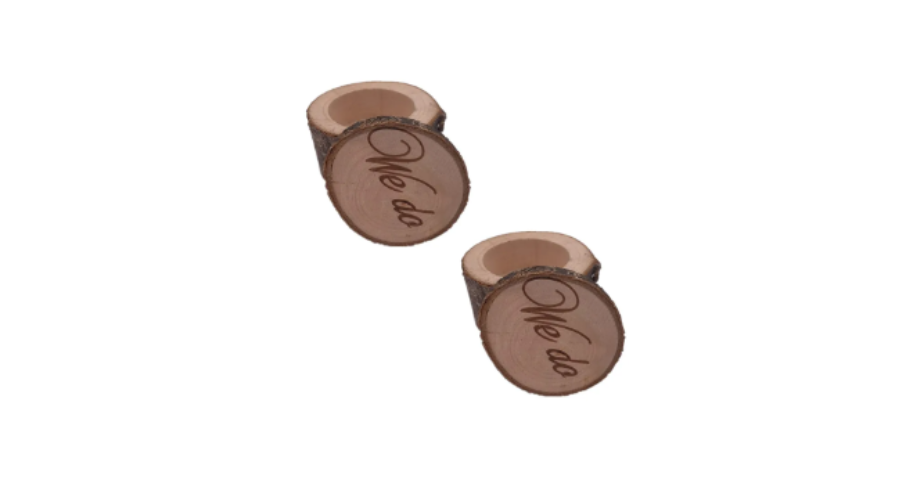Introduction
When it comes to jewelry storage, wood jewelry boxes transcend mere functionality; they are exquisite pieces of art that not only safeguard your treasured pieces but also add a touch of elegance to your space. The selection of the right wood is a pivotal decision that greatly influences both the aesthetics and longevity of these cherished containers. In this comprehensive guide, we will delve into the captivating realm of wood types for jewelry boxes, uncovering how different woods can elevate the beauty and durability of these precious storage solutions.

Factors to Consider
The process of choosing the perfect wood for your jewelry box involves assessing several key factors. Let’s explore these essential considerations:
Durability Matters
Durability is paramount when it comes to selecting the right wood for crafting a jewelry box. You want a wood that can endure the test of time while providing a safe haven for your valuable jewelry.
Oak
Oak stands as a classic choice renowned for its remarkable durability. Its robust nature shields your jewelry from potential scratches and dents, ensuring that your treasures remain intact.
Walnut
Walnut is another wood type prized for its durability. What sets it apart is its ability to age gracefully, developing a rich patina that enhances the allure of your jewelry box over time.
Mahogany
Mahogany, characterized by its striking reddish-brown hue, is a luxurious choice known for both its durability and opulent appearance. It adds an element of sophistication to your jewelry storage.
Embrace the Beauty of Grain Patterns
The unique grain patterns of wood significantly impact the aesthetics of your jewelry box. Let’s explore some wood types celebrated for their distinctive grain patterns:
Cherry
Cherry wood boasts a warm, reddish-brown color with a fine, straight grain. As it ages, it darkens gracefully, further enhancing the beauty of your jewelry box.
Maple
Maple offers a light, creamy color with a smooth and even grain pattern. Its simplicity adds a timeless and sophisticated charm to your jewelry storage.
Zebrawood
Zebrawood earns its name from its striking grain pattern, reminiscent of zebra stripes. This exotic wood choice infuses an element of wild beauty into your jewelry box.
Color and Appearance
The color and overall appearance of the wood are crucial factors in determining the aesthetics of your jewelry box. Let’s explore some wood options known for their distinct visual characteristics:
Cedar
Cedar wood features a reddish-brown color and emits a pleasant fragrance. Its rustic charm adds character to your jewelry storage.
Ebony
Ebony, with its deep, almost black hue, exudes sophistication and modernity. It’s the perfect choice for a sleek and contemporary jewelry box.
Birch
Birch presents a pale, creamy color that provides a clean and classic look to your jewelry box. Its simplicity complements a wide range of jewelry styles.
Workability and Craftsmanship
The ease with which a wood type can be worked with varies, making certain woods better suited for intricate designs. Let’s explore these wood options:
Pine
Pine is known for its ease of workability, making it an excellent choice for crafting intricate details on your jewelry box. Its light color serves as a canvas for various finishing options.
Cedar
Cedar’s softness and pleasing aroma make it a popular choice for carving intricate designs. Additionally, it boasts natural resistance to insects and decay.
Redwood
Redwood, a softwood, is prized for its workability and durability. It’s an excellent choice for creating intricate designs in your jewelry box.
Budget-Friendly Options
Not everyone is looking for premium wood options, and budget considerations are crucial. Let’s explore some cost-effective wood choices that don’t compromise on quality:
Plywood
Plywood is a wallet-friendly option that can mimic the appearance of more expensive hardwoods. It offers sturdiness and is readily available, making it a practical choice for budget-conscious individuals.
Poplar
Poplar is known for its affordability and smooth finish. It readily accepts paint, allowing you to customize the color of your jewelry box with ease.
Birch
Birch, in addition to its clean and classic appearance, is a budget-friendly option that provides an elegant look without straining your finances.
Conclusion
Selecting the right wood type for your jewelry box is a pivotal decision that profoundly impacts both its beauty and durability. Whether you opt for the timeless elegance of oak, the graceful aging of walnut, or the exotic allure of zebrawood, each wood type brings its unique charm to your jewelry storage. With the right wood, your jewelry box becomes not only a functional piece but also a work of art that showcases your treasures with sophistication and style.
FAQ (Frequently Asked Questions)
Q1: Can I combine different wood types in a single jewelry box design for a unique look? Certainly, combining different wood types can create a visually appealing contrast in your jewelry box. However, ensure that the selected woods complement each other in terms of both aesthetics and durability.
Q2: What finishes and coatings work best with different wood types to enhance their beauty and protection? The choice of finish depends on the wood type and your desired aesthetics. Common options include varnish, lacquer, and wax. It’s advisable to consult with a woodworking expert for the best finish for your chosen wood.
Q3: How can I ensure that the wood used in my jewelry box is sourced responsibly and ethically? To ensure responsible sourcing of wood, look for products certified by organizations like the Forest Stewardship Council (FSC). These certifications guarantee adherence to sustainable forestry practices.
Q4: Are there any eco-friendly or sustainable wood choices for jewelry boxes? Yes, several eco-friendly options, such as bamboo and reclaimed wood, are sustainable choices that reduce the environmental impact associated with wood sourcing.
Q5: What are the advantages and disadvantages of using exotic woods for crafting jewelry boxes? Exotic woods offer unique aesthetics but can be more expensive. When considering exotic options, take into account your budget and the rarity of the wood to make an informed choice.
5 thoughts on “Crafting Elegance: Exploring the Beauty and Durability of Wood Types for Jewelry Boxes”